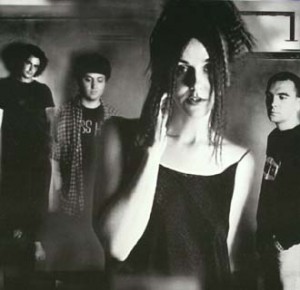6. Cranes, Population 4 (1997)
Cranes should have been huge for the same reason they could never be huge: they were too original, eccentric and off-putting to reach a mass audience. They never fit in comfortably to an easily definable “style” back in a time (early-to-mid ‘90s) when it was crucial, if facile, to be easily defined. They were kind of sort of shoegaze-y; they had elements of goth, dream pop, and straight-up rock. But the sounds were secondary; the thing that sealed—or broke—the deal was lead singer Alison Shaw’s voice. Angelic or irritatingly childlike, depending on one’s taste, this band is an acquired taste. But so are Neil Young and Black Sabbath.
On their early (and to most fans, best) works, like Wings of Joy and Forever, the emphasis is on languid, ethereal mood music, and Shaw’s inimitable (!) voice seems perfectly suited to the material—again, if you can get past the initial, unsettling delivery. On 1994’s Loved the music took on a harder edge (there were the tiniest traces of grunge here and there) and the juxtaposition of Shaw’s vocals and the rougher rhythms and edgy guitars provides an exhilarating contrast. Full of confidence and/or ambition, they pushed forward with 1997’s Population 4. I remember loving it, immediately, when it arrived and I still love it today. I may not be alone in my assessment, but I’ve read/heard/listened to entirely too many people ridicule and revile this effort to let it go undefended. Not only does it not suck, it is very good bordering on excellent. Inexplicably dismissed as being a sell-out, as if anything on this album could qualify as “commercial”, it is nevertheless accessible—relatively speaking.
There is a pop sensibility that perhaps alienated fans of the more subtle, cerebral material and one can almost imagine some of these songs (like the push-pull “Fourteen” or the ecstatic “Breeze”) on the radio—as if there is anything wrong with that. Radio would—and could—have been better for it if several of these tunes received regular airplay. For those who like their Cranes dark and brooding there is the delectably glacial “Angel Bell” (the tension between the acoustic strumming and cello-like electric guitar riffs is glorious) and the slo-mo implosion of album-closer “To Be”. In between there is the almost ebullient “Can’t Get Free”, the piano-driven toe-tapper “Brazil” and the near-disorienting perfection of “On Top of the World”. If you can get past that voice (and if you try, you will—and you’ll be glad you did) Population 4 will remind you, once again, that amazing music is always being made, especially when too many people are busy not trying to discover it.

